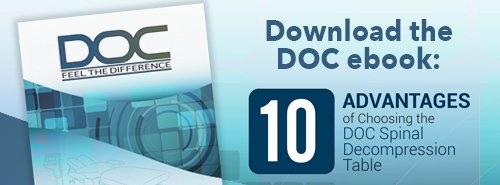"My back hurts, Doc." This is one of the most common complaints heard by family doctors. Approximately 25–60% of patients who experience low-back pain (LBP) will report recurrence of pain, many within as little as one year.¹ LBP is the most common cause of work disability in the US.² Many patients on disability for in excess of six months will not return to work, and that number decreases to near zero after two years.³ LBP is also the most expensive reason for work disability in the US.² It has been estimated that 2% of the work force in the US will be compensated for back injuries yearly.³

Image via Shutterstock |
Structural abnormalities such as disc degeneration or disc herniation as well as resultant biochemical effects such as inflammation can be the cause of disc-related pain.¹ According to Jarvik et al., “disc herniation with nerve root compression or irritation is the most common cause of neurologic abnormalities.”² Discogenic and radicular pain syndromes are common and continue to pose challenges to physicians and patients.¹ The DOC Decompression table has been developed to relieve pain while producing a healthy, healing environment for disc bulging, degenerating and herniated discs along with other spine related injuries and conditions.
According to Dr. Bryan Hawley, DC "Decompression occurs under ideal conditions of traction, where positive pressure in the disc changes to negative pressure, which creates a “suctioning” action drawing fluid back in the disc. This is called the “decompression” window, and a decompression table helps create that environment within the disc so that it can heal itself."
During a typical treatment, the patient lies in a supine position with a knee rest to eliminate pelvic rotation. A chest and shoulder system stabilizes the upper body, while a pelvic harness delivers distraction as the table moves. Each treatment centers on a variety of adjustable, logarithmic ramp-up, hold and release protocols implemented by a computerized system. The DOC Decompression table offers precise, computer-controlled tension and the appropriate disc levels are gently and painlessly distracted to achieve a negative pressure within the disc. The goal of treatment is to lessen pain by creating a decompressive force that reduces herniation, increases intradiscal space, and decreases intradiscal pressure during treatment. The result is non-surgical spinal decompression.
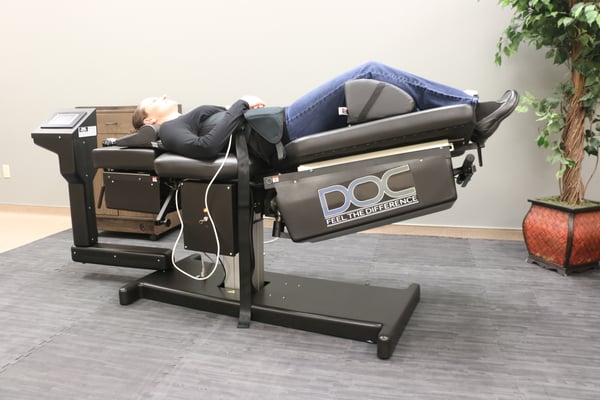
Used consistently over approximately 15 to 25 visits, three days per week, patients see results that last when combined with adjunctive therapies such as specific core strengthening exercises.
Working the Angles
Decompression provides chiropractors with another tool that’s designed specifically to treat mechanical problems in the muscles, joints or discs of the back or neck through modifications in the angle of distraction, position of the spine, and the amount of force applied to target appropriate spinal levels.
While other decompression table models apply pressure to the joints in a linear fashion, PHS Chiropractic’s tables are different. Chiropractic is all about specificity and working with the angles of the vertebral joints. Keeping this in mind, the engineers at Pivotal Health Solutions produced a decompression table that allows for all degrees of angulation along with rotation.
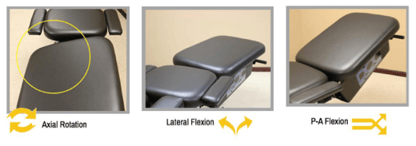
Photo courtesy of PHS Chiropractic |
The DOC Decompression Table allows chiropractors to treat patients in a variety of positions making it one of the most advanced decompression tables on the market. Doctors can treat a wider variety of conditions and more difficult cases with a three-dimensional approach including:
|
Supine Flexion Great for patients suffering from conditions where flexion improves symptoms. Supine Extension The ideal position for older or heavier patients who can't tolerate prone decompression but benefit from extension with disc herniations or disc bulging. |
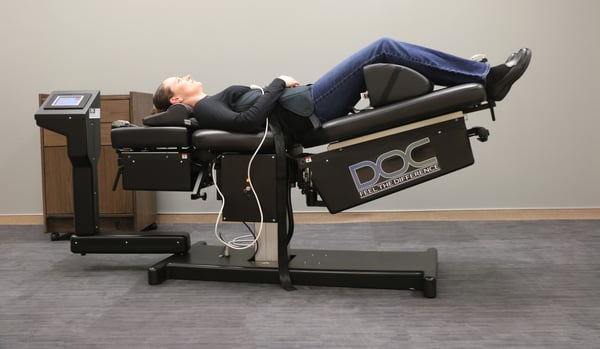
Photo by PHS Chiropractic |
|
Prone Flexion The ideal position for patients suffering from symptoms of Spinal Stenosis. Prone Extension An effective position for younger patients who can tolerate prone positioning for symptoms of disc herniations and disc bulges. |
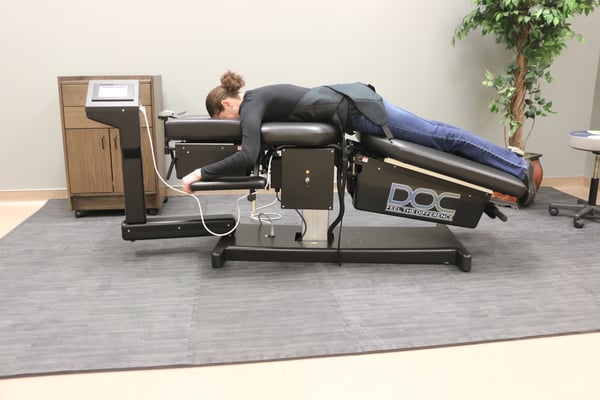
Photo by PHS Chiropractic |
|
Lateral Flexion Laterally flexing away from a disc herniation can dramatically help improve disc herniation outcomes. It is also effective for symptoms of antalgic patients. |

Photo by PHS Chiropractic |
|
Rotation An effective patient position for antalgic patients. |
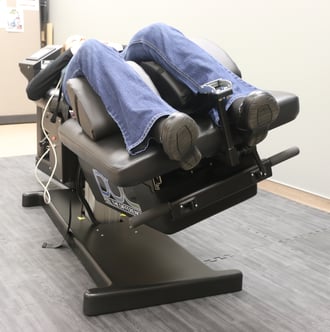
Photo by PHS Chiropractic |
Final Analysis
What does this mean for the doctor? Less force on the patient with greater results. Other tables may apply up to 100 lbs. of force, while the DOC Decompression Table by PHS Chiropractic applies only about 45 to 50 lbs. for the same result. Reduced force also helps prevent what is termed “decompression hangover” or delayed-onset muscle soreness patients may experience the next day if too much pressure is applied too quickly. Less force used during the initial treatment can avoid or dramatically decrease this effect.
Spinal decompression therapy is safe, comfortable, and painless. As decompression therapy becomes better known, patients are likely to look to chiropractors as a source of information, referral or treatment. Knowledge about the technique is a good place to start for those who wish to educate their patients about alternatives to surgery. While all decompression tables offer a linear, one-dimensional pull with the patient in a supine position, the DOC tables offer three-dimensional traction to allow treatment for a wider variety of conditions and more difficult cases.
References:
1. Boswell MV, Trescot AM, Datta S, et al. Interventional techniques: evidence-based practice guidelines in the management of chronic spinal pain, Pain Physician, 2007;10(1):7–111.
2. Jarvik JG, Deyo RA, Diagnostic evaluation of low back pain with emphasis on imaging, Ann Intern Med, 2002;137(7):586–97.
3. Andersson GB, Epidemiological features of chronic low back pain, Lancet, 1999;354:581–5.
Read the entire case report titled "Management of Discogenic Low-back Pain with a Non-surgical Decompression System — case report" by Joe Pergolizzi, MD,¹ Terry Yochum, DC, DACBR, ² Frank Florio, DC,³ Charlotte Richmond, PhD 4 and Brian S McCain, DC 5.
1. Adjunct Assistant Professor, Johns Hopkins University School of Medicine2. Director, Rocky Mountain Chiropractic Radiological Center
3. Director of Clinical Research, Axiom Worldwide, LLC
4. Director of Clinical Research, NEMA Research Inc, Miami Beach
5. Chief Administrator, Back in Action Spine and Health Centers


